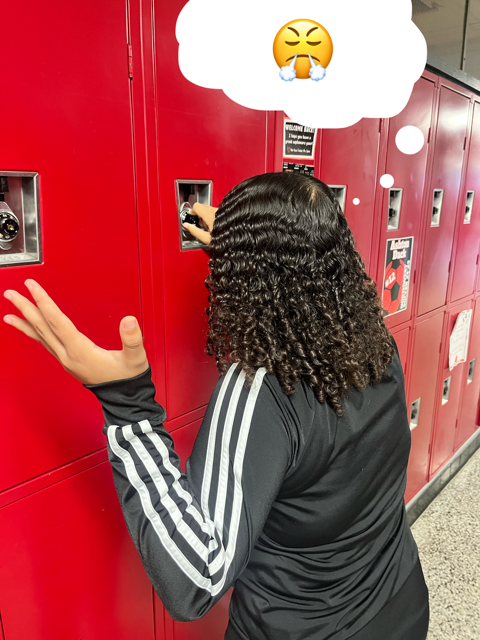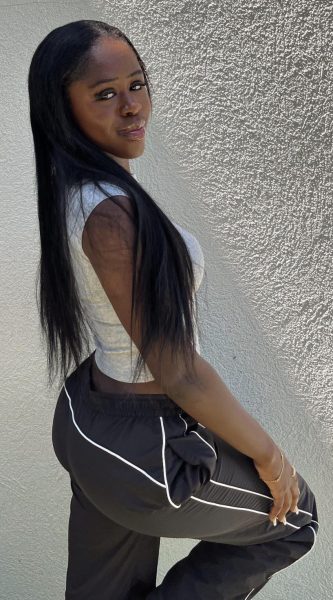Across Northwest High School (NWHS), locker issues have become a recurring problem throughout the student body. Students are frustrated with locker difficulties.
Locker jamming, a common issue among students, has prompted NWHS students to develop techniques to make opening lockers easier. Examples include sticking pencils in locks or not closing the locker altogether, allowing students to keep their lockers open at all times, and removing the hassle of entering their combination. However, these methods can lead to more serious instances of stolen items, damage done to lockers, and fines by administration.
Despite knowledge of frequent locker jams, faculty continues to enforce five minutes of passing time after each period. This is due to safety regulations and maintaining the required length of each school day.
Views on the subject of locker mechanical issues come from all parts of the school, such as new students. These include people like Senior Lujayn Mutahr, who transferred to NWHS this school year from Jackson High School.
“It is annoying to have to get on my knees every time I want to open my locker,” said Mutahr.
As for strategies relating to opening up her locker in between passing times, Mutahr claims to have none, as she has had a lot of practice throughout her years in high school.
Mutahr acknowledges the reason students may put a barrier within their locker mechanics to allow easy opening and disagrees with the disciplinary action that is taken toward students who are using these methods, as there is no compromise regarding elongating passing times to ensure kids have time to gather their belongings.
“It [passing time] could be a little bit longer, especially when I have to stop at my locker,” said Mutahr.
Assistant Principal Phil Sczykutowicz has tested if the five-minute passing time is practical. Sczykutowicz performs this experiment while ensuring he travels across the entire building.
“I, on average, could traverse the building from anywhere from 2 minutes and 30 seconds to 3 minutes. If I put a combination in and got into a locker, probably another minute, so that is 4 minutes, so I think that still gives you an extra minute,” said Sczykutowicz.
Sczykutowicz has increased passing time during the years of COVID-19. Unfortunately, extending the passing time caused more problems for the school.
“We found that the kids were creating more issues, leading to more building distraction and disruption with the increased time frame,” said Sczykutowicz.
While it has been common in past years to find pencils jamming lockers, a new issue arose with the lockers facing physical damage.
“This year though…we have seen more lockers jammed, but we have also had broken lockers, where the actual combination part of the lock is physically broken,” said Sczykutowicz. “We have never had this issue before in my ten years of administration here.”
Despite the frequency of locker jamming, and lockers being broken, Sczykutowicz wants to put more consideration into helping the students with their locker complications.
“Our goal is that those increased staff that are in the hallways would actually work with students to make their locker work correctly,” said Sczykutowicz.
The number of staff in the building can be argued to be adequately distributed around the school for student’s benefit. Freshman Stephanie Ibeson has had no issues with her locker this year and has heard from acquaintances that they have had no problems getting help either.
“I’m pretty quick with getting stuff out of my locker and getting to class,” said Ibeson.
Nonetheless, students are still complaining of documented tardiness, even after justifying their lateness.
Lockers, meant to be a safe place to store valuables, have brought substantial inconveniences among students who have to contend with complications with combinations, the mechanisms of the locker, or even a lack of time.
While hardware issues with lockers may always exist, improved communication and additional measures can help students better align their needs with those of the staff.




